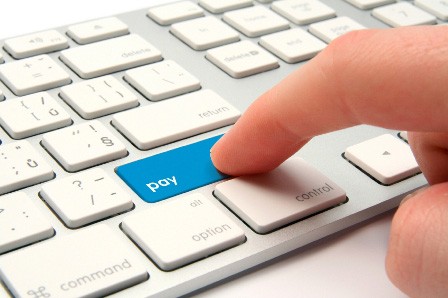How do I pay my Obamacare premium?
Since October, millions of Americans have shopped for health insurance in the new marketplaces created by federal health care reform. But how will the payment of premiums work?
Like many other aspects of the Affordable Care Act, also known as Obamacare, that depends on where you live.

The details of premium payment — how you get billed, who you pay and what forms of payment you can use — will vary based on whether the individual insurance marketplace in your state is run by the federal or the state government.
If the marketplace — also known as an exchange — is run by the state, the ins and outs of premium payment will depend on the decisions your state has made, says Rachel Dolan, policy specialist with the National Academy for State Health Policy.
How do you pay your Obamacare premium?
In general, premium payment will likely work in one of three ways, Dolan says.
1. You pay the insurer. After you go to the marketplace and pick a plan, you might get redirected to the insurer website to make the first payment to the insurance company. After that, you’ll get bills from and make payments directly to your insurance company, Dolan says. For example, the federally-run exchanges, as well as California and Colorado, have decided to leave all premium billing and collection to the insurers.
2. You make your first payment to the exchange, then pay the insurer. In this scenario, you choose a plan and make one initial payment to the exchange. After that, you begin getting bills from the insurance company. In both scenarios, family members who have plans through separate insurers would pay individually. The District of Columbia and Maryland exchanges will use this payment method, Dolan says.
3. You pay the exchange. If the marketplace in your state has decided to take on the task of premium billing and collections, you’ll get invoiced by and pay the exchange. But Dolan notes that if you prefer to pay the insurer directly, the ACA requires that you are allowed to do so.
Some marketplaces have chosen to offer a billing option that will consolidate a family’s bills into one simple payment. For example, the exchanges in Utah and Nevada will both offer this service. In Nevada, public insurance will be included in the mix, so a family can pay one bill even if some family members have private insurance purchased through the exchange while others have Medicaid. “That’s pretty unique,” Dolan says of Nevada’s choice to include public insurance in the consolidated billing.
That method of billing can make health insurance payments much simpler for consumers, Dolan says.
But there’s a good reason many states aren’t offering this option. “They don’t want to be the ones who have to hound people to pay their premiums — or be in the position of being out the money if someone (doesn’t pay),” Dolan says.
Late on your payment? The ACA offers time to catch up
So, what if you’re late on a payment? The ACA has specific rules that all exchanges and insurers must follow when certain consumers are late or don’t pay.
For consumers who don’t get subsidies, the consequences of late payment can vary by state. But consumers who get tax credits, paid in advance to lower their premiums, are covered under a rule from the U.S. Department of Health and Human Services.
The rule says that if you forget to pay, you get a 30-day grace period, says Brian Haile, senior vice president for health policy at Jackson Hewitt Tax Service. You need to pay what you owe on your premium, but your health insurance coverage continues during that month. But if you haven’t paid by day 31, you’ll lose your coverage, Haile adds.
But consumers have another chance. You have 60 more days to get current on your bills, Haile says. If you pay during that time, your coverage must be reinstated retroactively, so health care you received in the interim would then be covered.
If you don’t get current and you receive subsidies that lower your monthly premium, you could end up owing Uncle Sam the subsidy money paid to the insurer on your behalf. “The government can come back and say, ‘Now you owe us,'” Haile says, noting that won’t happen if you get current and stay insured. But, if a consumer doesn’t pay and gets dropped by the insurer, he’ll also get hit with a tax penalty for not having health insurance.
Cash, check or credit?
To make that payment, can you write a check, pay with plastic or even use cash? Your payment options will partly depend on what’s offered either by the exchange or the insurer, whichever one you pay.
But a recent rule issued by the U.S. Department of Health and Human Services requires insurers and exchanges to accept several specific payment methods:
- General purpose prepaid cards, such as the Visa Prepaid card.
- Paper checks.
- Transfers from bank accounts.
- Money orders.
- Cashier’s checks — these are checks that banks issue from their own funds after getting the money from a consumer.
However, exchanges or insurers can decide to accept additional methods of payment, says Dan Schuyler, director of exchange technology at health care consulting firm Leavitt Partners. Exchanges and insurance companies should come up with alternative payment methods — especially for consumers who deal mainly in cash, he says.
“It makes sense to provide as many payment methods as possible,” Schuyler says.
Making it convenient to pay premiums will help achieve a main goal of the ACA: getting Americans insured. “You want people to sign up for coverage and keep that coverage for as long as they can,” Haile says.
